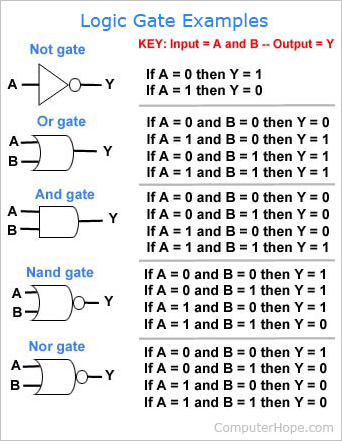Logic gate

A logic gate is a device that performs one or all the Boolean logic operations AND, NAND, NOR, NOT, OR, XNOR, and XOR. All logic gates except NOT accept two binary digits as input and produce one binary digit as output. NOT gates accept only one input digit.
Two of the logic gate types, NAND ("not and") and NOR ("not or"), are called universal logic gates. Either of these gates may be used with itself to create any other type of logic gate.
In a CPU (central processing unit), logic gates are implemented using semiconductors as transistors or diodes. However, they can be constructed and implemented using various technologies based on natural phenomena, including optics, vacuum tubes, pneumatics, or even architected molecules.
In the diagram at right, A and B are the input power sources, and Y is the output power, 1 represents power or "on," and 0 indicates "off" (no power). In the first example of the Not gate, the output would turn on if A had no power. If A had power, the output would turn off.
